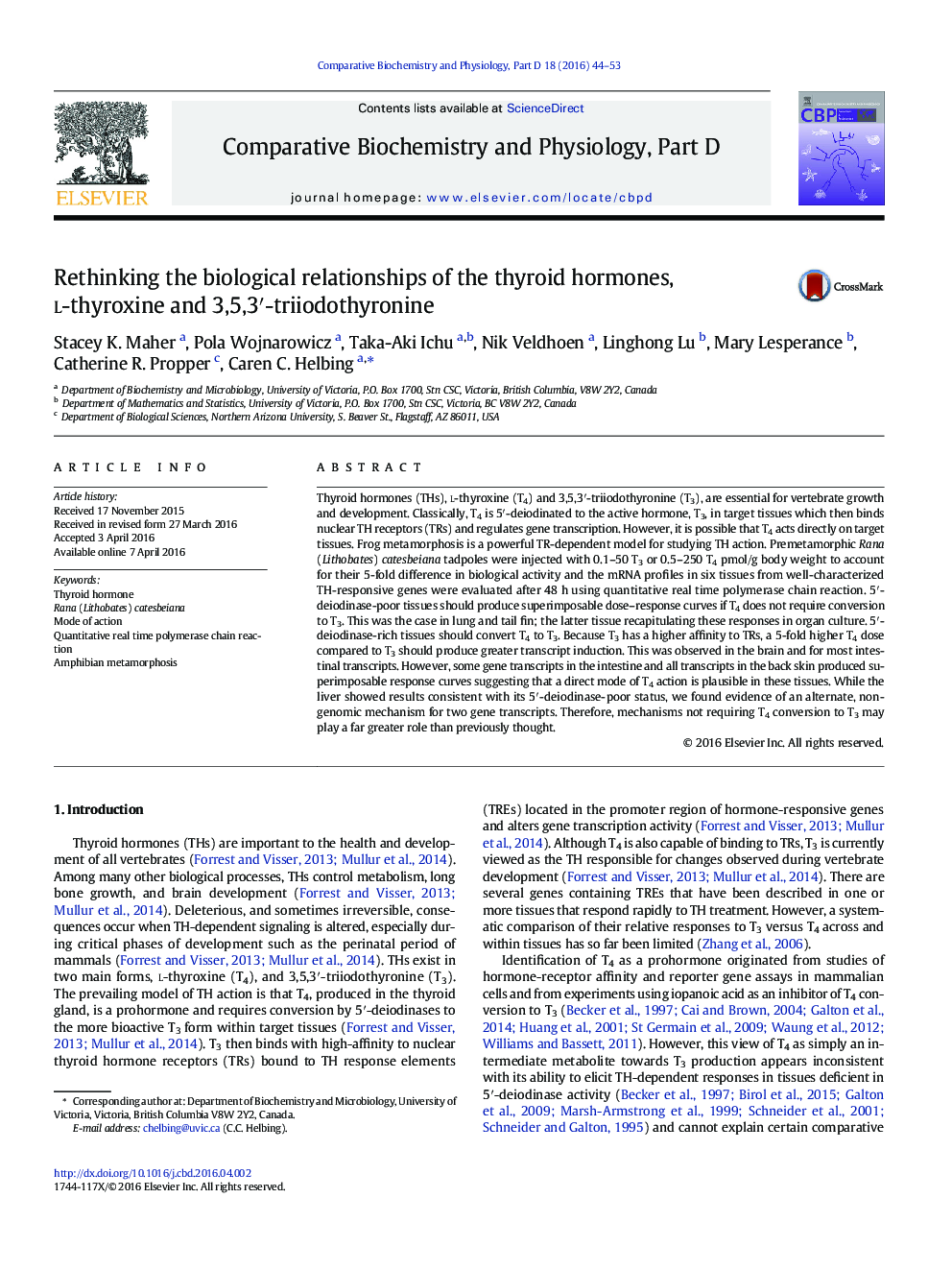| کد مقاله | کد نشریه | سال انتشار | مقاله انگلیسی | نسخه تمام متن |
|---|---|---|---|---|
| 1978482 | 1539317 | 2016 | 10 صفحه PDF | دانلود رایگان |

Thyroid hormones (THs), l-thyroxine (T4) and 3,5,3′-triiodothyronine (T3), are essential for vertebrate growth and development. Classically, T4 is 5′-deiodinated to the active hormone, T3, in target tissues which then binds nuclear TH receptors (TRs) and regulates gene transcription. However, it is possible that T4 acts directly on target tissues. Frog metamorphosis is a powerful TR-dependent model for studying TH action. Premetamorphic Rana (Lithobates) catesbeiana tadpoles were injected with 0.1–50 T3 or 0.5–250 T4 pmol/g body weight to account for their 5-fold difference in biological activity and the mRNA profiles in six tissues from well-characterized TH-responsive genes were evaluated after 48 h using quantitative real time polymerase chain reaction. 5′-deiodinase-poor tissues should produce superimposable dose–response curves if T4 does not require conversion to T3. This was the case in lung and tail fin; the latter tissue recapitulating these responses in organ culture. 5′-deiodinase-rich tissues should convert T4 to T3. Because T3 has a higher affinity to TRs, a 5-fold higher T4 dose compared to T3 should produce greater transcript induction. This was observed in the brain and for most intestinal transcripts. However, some gene transcripts in the intestine and all transcripts in the back skin produced superimposable response curves suggesting that a direct mode of T4 action is plausible in these tissues. While the liver showed results consistent with its 5′-deiodinase-poor status, we found evidence of an alternate, non-genomic mechanism for two gene transcripts. Therefore, mechanisms not requiring T4 conversion to T3 may play a far greater role than previously thought.
Journal: Comparative Biochemistry and Physiology Part D: Genomics and Proteomics - Volume 18, June 2016, Pages 44–53